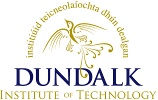Smith, Ronan (2014) Thermal insulation of the building fabric: a comparison of a conventional house and a passive house. Bachelors thesis, Dundalk Institute of Technology.
|
PDF (This work is made available on the understanding that the reader will not publish in any form either the whole or any part of it without permission from the author. This work may not be copied. The copyright of this work belongs to the author.)
- Accepted Version
Restricted to Registered users only Download (3MB) |
Abstract
Passive houses are becoming ever more popular in Ireland today. Many people are adapting to the concept of living and experiencing the passive house standard compared to the more popular conventional house. The author believes that the two aspects that drive the passive house perception is the owner’s personal interest in wanting to embrace the passive concept and the end results of minimalistic heating bills. This dissertation focuses on the thermal comparison of the building fabric between conventional house construction and passive house construction. The purpose of the research is to give the reader a clear understanding of what is involved within the thermal insulation of the building fabric. An important aspect of this dissertation is to make sure all necessary information in relation to the building fabric is clarified. It is important to give the reader an insight into the comparison between a conventional house and a passive house. An analysis of the buildings methods were compiled into a case study where a comparison of the various elements were carried out. This dissertation has found that when comparing the conventional house against the passive house, not only were the U-values significantly more efficient for the passive house but also elements such as airtightness, heating loads, energy demand and building energy ratings have all been favourable towards the passive house. It also identifies potential heat saving aspects that passive house occupants would benefit from.
| Item Type: | Thesis (Bachelors) |
|---|---|
| Uncontrolled Keywords: | Passive houses; Building fabric; Thermal insulation. |
| Subjects: | Engineering |
| Research Centres: | UNSPECIFIED |
| Depositing User: | Sean McGreal |
| Date Deposited: | 04 Aug 2015 11:03 |
| Last Modified: | 04 Aug 2015 11:27 |
| URI: | https://eprints.dkit.ie/id/eprint/452 |
Actions (login required)
 |
View Item |
Downloads
Downloads per month over past year

